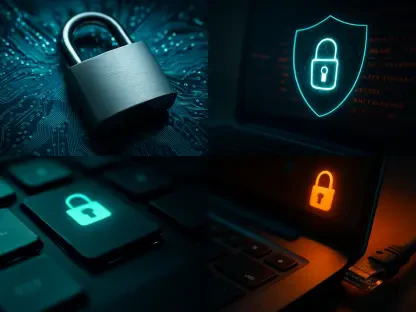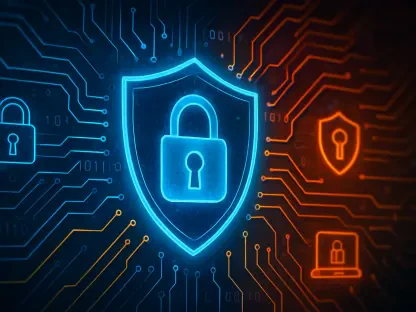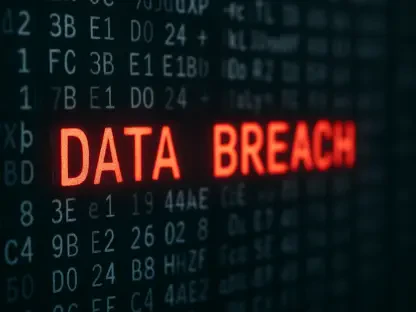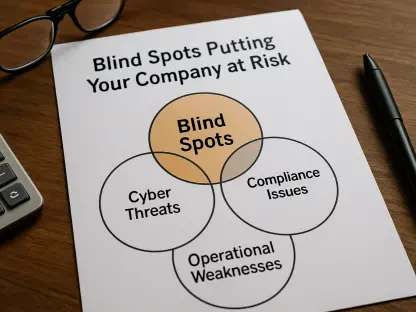Cybersecurity threats loom larger than ever, with sophisticated attacks becoming a daily occurrence. As organizations brace themselves for the inevitability of cyber incidents, the emphasis is shifting from mere planning to comprehensive preparedness and execution. It’s no longer sufficient to have a plan in place; organizations must continuously test and refine their response strategies to navigate the complex landscape of modern cyber threats successfully. Adopting a proactive stance towards cybersecurity is critical in today’s interconnected world, demanding constant vigilance and readiness from businesses worldwide.
The Inevitability of Cyberattacks
In today’s digital era, the question isn’t whether an organization will be targeted by cybercriminals but when. This stark reality underscores the need for businesses to prepare tirelessly for any eventuality. Within this context, an incident response plan becomes a crucial element of the overall cybersecurity strategy. Cyber threats have evolved rapidly, driven partly by the cybercrime-as-a-service model, which lowers the barriers for cybercriminals. A prime example is the rise in remote ransomware attacks, highlighting the gaps in traditional endpoint security solutions and necessitating the need for more advanced defenses.
Incident response planning must go beyond being a theoretical exercise. Organizations should develop detailed blueprints that outline procedures to navigate the chaotic aftermath of an attack, ensuring a swift and effective response. These plans are meant to mitigate potential damages and expedite recovery, involving all parts of the organization from IT to communications, finance, and legal units to cover every possible aspect and repercussion of an attack. The continuous evolution and sophistication of cyber threats call for equally advanced and evolving strategies to counteract them, ensuring that businesses stay one step ahead of malicious actors.
From Reactive to Proactive: Shifting Cybersecurity Strategies
A reactive approach to cybersecurity is no longer viable. Instead, organizations must embrace a proactive mindset, stepping ahead of potential threats through constant vigilance and readiness. Practicing incident response through simulations and tabletop exercises is an effective way to build this proactive stance. These exercises, mirroring real-world scenarios, are instrumental in identifying weaknesses, validating response protocols, and ensuring that all stakeholders understand their roles during an actual incident. Proactive preparedness translates to quicker and more accurate responses when faced with genuine threats, reducing the impact of cyber attacks.
Furthermore, the practice of these strategies shouldn’t be confined to technical teams alone. A well-rounded cybersecurity framework necessitates the involvement of various business units. This collaborative approach ensures a comprehensive understanding of the potential impacts and coordinated response efforts, enhancing the organization’s overall cyber resilience. Engaging in regular cyberattack simulations fosters organizational fluency in handling incidents, preparing teams not just for the technical recovery but also for the broader implications such as negotiation decisions and media handling. This comprehensive readiness is key to bridging the gap between planning and effective execution in cybersecurity.
Continuous Practice and Readiness
Just as fire drills are essential for ensuring readiness against natural disasters, cybersecurity drills are vital for preparing against cyber incidents. Regularly scheduled ransomware tabletop exercises enable organizations to rehearse their incident response plans, reinforcing familiarity with procedures and roles. These exercises scrutinize every facet of the incident response, testing not only the technical recovery processes but also the broader organizational response. This includes the decision-making around negotiations with criminals, communication strategies for employees and partners, and handling media inquiries, ensuring a well-rounded approach to incident management.
Equally important is the monitoring and validation of dependencies on third-party services. During a cyberattack, reliance on external recovery or communication services can be critical, making it essential to ensure that these partners are integrated into simulation exercises and fully aligned with the organization’s response protocols. Practicing these responses under simulated conditions helps pinpoint gaps and areas needing improvement, fostering a seamless and efficient real-world application of the incident response plan. Continuous practice and readiness build organizational resilience, equipping businesses to handle the unpredictable nature of cyber threats effectively.
The Role of Modern Endpoint Solutions
The complexity and sophistication of recent cyber threats demand advanced endpoint solutions capable of effectively neutralizing them. Conventional security measures often fall short, especially against evolved attack vectors like remote ransomware. To counter these threats, organizations must adopt modern, intelligent security tools that leverage AI and machine learning to predict and combat sophisticated attacks. These advanced endpoint solutions offer significant advantages, enabling prompt threat detection and response to prevent extensive damage.
Investing in such advanced solutions is crucial in maintaining a secure perimeter, ensuring a timely response to breaches, and minimizing their impact on business operations. Modern endpoint solutions are integral to a robust cybersecurity strategy, providing the necessary technological edge to outpace the ever-evolving cyber threats. By incorporating these cutting-edge tools into their cybersecurity framework, businesses can enhance their threat detection capabilities, ensuring that they remain vigilant and responsive in the face of sophisticated cyber attacks. The adoption of modern endpoint solutions fundamentally strengthens the organization’s cybersecurity posture.
Multidisciplinary Approach to Incident Response
An effective incident response is inherently multidisciplinary, requiring input and coordination from various parts of an organization. Cybersecurity is not solely a technical challenge; it encompasses legal, financial, communicational, and ethical dimensions, necessitating a holistic approach. During a cyber incident, legal teams navigate compliance and regulatory obligations, while communication teams manage both internal and external messaging. Finance departments assess the monetary impacts and oversee potential ransom negotiations, ensuring a comprehensive response that addresses every facet of the attack.
Encouraging cross-departmental collaboration and establishing clear communication channels is pivotal for a seamless incident response. The integration of diverse expertise and perspectives fortifies the organization’s ability to handle the multifaceted nature of cyber threats. This multidisciplinary approach ensures that all potential implications of an attack are thoroughly addressed, from technical recovery processes to legal compliance and financial assessments. By fostering a collaborative environment, organizations can respond to cyber incidents more efficiently, ensuring a coordinated and effective response across all units.
Avoiding Ransom Payments
The threat of cybersecurity breaches looms larger than ever, with increasingly sophisticated attacks happening daily. As organizations brace for the inevitability of cyber incidents, the focus is shifting from merely having a plan to being fully prepared and capable of effective execution. Simply put, having a static plan isn’t enough; companies must continuously test, revise, and enhance their response strategies to effectively navigate the intricate landscape of modern cyber threats.
Adopting a proactive stance towards cybersecurity has never been more critical. In an interconnected world where data flows freely and cyber threats evolve rapidly, organizations need to maintain constant vigilance and readiness. This means not only investing in advanced security technologies but also fostering a culture of cybersecurity awareness among employees at all levels. Regular training, simulated cyber attack exercises, and real-time monitoring are essential components of a robust cybersecurity strategy. In this environment, where the stakes are incredibly high, an effective cybersecurity approach demands both a strategic mindset and operational diligence from businesses worldwide.









